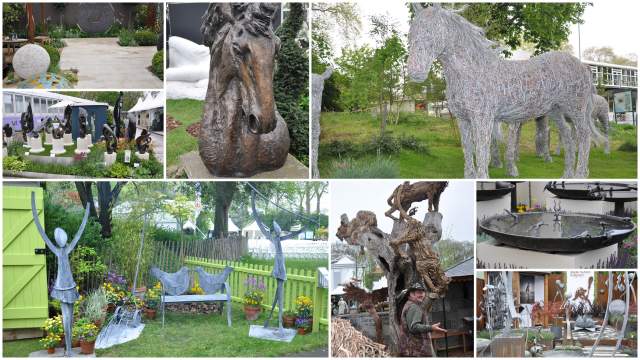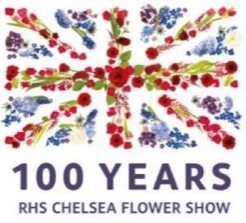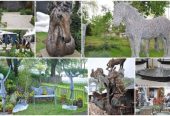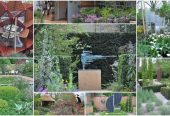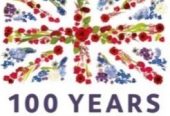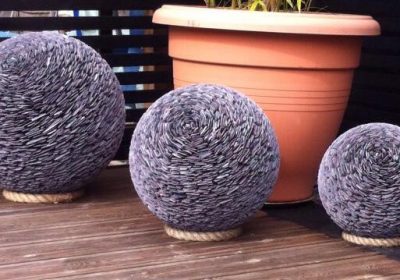2013 RHS Chelsea Flower Show Show Garden Exhibitors
Description
RHS Chelsea Flower Show 2013
Fabulous Show Gardens


Fabulous Sculptures


And lots of celebrity visitors


Exhibitor: Arthritis Research UK
Garden Name: The Arthritis Research UK Garden Site number: RHW/1
Sponsor(s): Arthritis Research UK
Designer(s): Chris Beardshaw
Contractor: Keith Chapman Landscapes
Plants supplied by: Hortus Loci
Media contact name: Arthritis Research UK: Charlotte Tyler/ Chris Beardshaw: Jane Southcott
Media contact email: [email protected] / [email protected]
Media contact tel no: Charlotte: 020 7307 2220 / Jane: 01275 852026
Exhibitor website: www.arthritisresearchuk.org / www.chrisbeardshaw.com
This year’s Arthritis Research UK Garden, designed by Chris Beardshaw, reflects the personal journey and emotions of someone with arthritis, from lack of understanding and confusion following a diagnosis, to a point where they are informed about the disease and are able to manage their pain.
The journey is represented across three key garden areas, beginning in the Veiled Garden. This shaded, woodland garden features a contemporary retreat and sculpture with a stepping stone pathway. A dense canopy of woodland trees is under-planted with plants and shrubs including Rosa glauca, Mertansia virginica, Trillium luteum, Digitalis purpurea „Snow Thimble?, Corydalis „Blackberry Wine? and Brunnera „Jack Frost?.
The Lucid Garden with a white planted zone begins to weave itself under the woodland canopy. The white and green palette of plants is accented with the occasional sparkle of bright blue. Plants include Dianthus „Haytor White?, Anthyrium nipponicum pictum, Euphorbia „White Swan? and Astrantia „White Giant?. A reflective pool with a key sculpture helps give a sense of clarity before moving forwards into the slightly sunken Radiant Garden where there are warm, vibrant colours of pinks, purples, oranges and blues. Plants such as Iris „Supreme Sultan?, Lupinus „Masterpiece, Lunaria „Corfu Blue?, Tanacetum parthenium, Oenothera versicolor and Anchusa „Loddon Royalist? provide a sense of warmth, openness and confidence as the person with arthritis learns to manage their condition and keep active, doing the things they love.
The garden highlights the journey that over 10 million people in the UK experience when faced with a diagnosis of arthritis to raise awareness of how Arthritis Research UK can help support people with arthritis to manage their condition through their information and funding of life-changing research.
Fundamental to the story of the garden is the direct link between the sponsor and designer, Chris Beardshaw. Chris was diagnosed with a form of rheumatoid arthritis in his early teens, but has been able to manage his arthritis and is, therefore, a perfect role model of how you can live a successful and active life whilst living with the condition.
Chris has designed seven RHS medal-winning gardens at the RHS Shows at Hampton Court Palace and at Chelsea. In 2012, The Arthritis Research UK Garden was awarded the People?s Choice Award at RHS Chelsea Flower Show and was awarded a Silver Gilt medal.
Exhibitor: B&Q Sentebale
Garden Name: B&Q Sentebale „Forget-me-not? Garden Site number: MA16
Sponsor(s): B&Q
Designer(s): Jinny Blom
Contractor: Steve Swatton
Plants supplied by: Hortus Loci
Media contact name: Zaria Pinchbeck (B&Q/Z-PR) and Alice Lycett Green (Sentebale) Media contact email: [email protected] / [email protected]
Media contact tel no: Zaria: 0207 896 3404 / Alice: 020 7499 9667
Exhibitor website: TBC
Jinny Blom?s design is inspired by the charity Sentebale, which means “Forget-Me-Not” in Sesotho, the language spoken in Lesotho, Africa.
HRH Prince Harry spent time in Lesotho during his gap year working with some of Lesotho?s most vulnerable children and orphans. He felt compelled to help more and, in 2006, he founded Sentebale with Prince Seeiso of the Lesotho Royal family.
The garden at RHS Chelsea has been designed to educate people about Lesotho?s „Forgotten Kingdom? and more importantly, Sentebale?s role in supporting Lesotho?s most vulnerable children, many of whom are victims of extreme poverty and Lesotho?s HIV/AIDs epidemic.
The garden is a contemporary, conceptual evocation of the mountains, round houses and unusual blanket designs that are the national costume. It aims to express not only the beauty and rich culture, but also the inaccessibility and fragility of the country and its people.
The garden features textural planting and muted colours to paint a picture, using plants compatible with the conditions in Lesotho. The mountainous area of the garden will be planted with pines, to mimic the scrubby evergreen foliage found clinging sparsely to the mountains of Lesotho, and the silvery foliage of Hippophae rhamnoides, which can cope with the very varied conditions and colonises rough land. It will be under-planted with plants such as Acaena, Trifolium William, Silene fimbriata and Papaver glaucum.
The semi-dry conditions at the foot of the mountain are represented by Acaena and Papaver glaucum as well as Salvia species, Nemesia varieties and Myosotis arvensis (forget-me- nots).
Below the mountain, there is a damp valley. In Lesotho, mass deforestation is being ameliorated by planting willow in the valley delta, so old Willow pollards will create a silvery screen in the garden, and accentuate the dampness. Amongst these will be plants such as, Ajuga reptans, Anthriscus „Raven?s Wing?, Astrantia species, Darmera peltata, Rheum palmatum, silene dioica, Cyperus species, Osmunda regalis and Myosotis arvensis.
Hard-landscaping elements include a pavilion of laser-cut birch plywood, and rendered block work, hand painted with a Lesotho design.
B&Q has previously exhibited at RHS Chelsea Flower Show in 2011 with The B&Q Garden, designed by Laurie Chetwood and Patrick Collins. Jinny Blom designed gardens at RHS Chelsea in 2002, 2006 and 2007. In 2002 she designed a garden in collaboration with HRH The Prince of Wales, commemorating his grandmother, HRH The Queen Mother, who passed away as the garden was being made. Sentebale has never previously exhibited at the show.
Exhibitor: Delancey
Garden Name: East Village Garden
Site number: MA19
Sponsor(s): Delancey
Designer(s): Michael Balston and Marie-Louise Agius
Contractor: Willerby Landscapes Ltd.
Plants supplied by: Deepdale Trees, Kelways, Burncoose Nurseries and Exbury Gardens
Media contact name: Marie-Louise Agius
Media contact email: [email protected]
Media contact tel no: 0207 373 4300 / 07710 088 797
Exhibitor website: www.balstonagius.co.uk / www.eastvillagelondon.co.uk
Michael Balston returns to Chelsea following a 13 year absence, with the East Village Garden. Co-designed with Marie-Louise Agius as Balston Aguis, the garden picks up the „designed for living? theme of the Olympic legacy East Village, and represents the sustainable regeneration of a locality.
Referencing the local history of nurseries and gardens, it sets strong architecture against a rich horticultural palette, including less commonly exhibited shrubs and herbaceous plants.
Curving lines and leaf-forms respond to elements of the Olympic Park, and local references are picked up in the boundary, structures and planting. The balcony-like chevrons overlooking the garden evoke the „designed for living? concept of the village with views onto green space.
The focus of the planting is on shrubs, textures and foliage, and this is realised through the use of plants such as rhododendrons, Enkianthus, Ceanothus, Pittosporum, Vibernum and ferns.
These are off-set against an herbaceous palette.
Celebrating the creation and delivery of London?s „Legacy Promise? and the birth of London?s newest neighbourhood, which opens to residents in late-Summer 2013, the garden is inspired by a desire to provide the best of city living, but with the luxury of open space.
Marie-Louise Agius has previously designed a Show Garden at the RHS Hampton Court Palace Flower Show in 2008.
Michael Balston first designed a Show Garden at Chelsea in 1985, when his garden designed for Vogue was awarded a Silver-Gilt medal. Since then he returned in 1986 with a Gold medal-winning garden for Faberge and in 1999 with a Gold medal-winning design for The Daily Telegraph which was also awarded Best Show Garden.
Exhibitor: Brewin Dolphin
Garden Name: The Brewin Dolphin Garden Site number: MA21
Sponsor(s): Brewin Dolphin
Designer(s): Robert Myers
Contractor: Willerby Landscapes
Plants supplied by: Hortus Loci, Deepdale Trees
Media contact name: Sarah Keane / Natasha Elliott
Media contact email: [email protected] / [email protected] Media contact tel no: 0203 201 3042 / 0755 7191 695
Exhibitor website: www.brewin.co.uk/chelsea
Brewin Dolphin designer, Robert Myers, will create a calm, reflective and private garden space. With native planting, stone, timber and water, the garden will be an area for relaxation and informal entertainment.
The design is inspired by sponsor Brewin Dolphin?s ethos as a company; bespoke and innovative, but firmly rooted in past traditions. The various spaces for entertaining and interaction reflect the importance placed on personal relationships and conviviality.
The planting is based on a palette of UK native species, reflecting interest in the benefits of native planting, as well as the sponsor’s British provenance as a UK company. Species have been chosen for their flower colour, form and leaf texture, appropriate for this garden setting. The selection of British natives is based on the Natural History Museum’s Checklist of British Native
Plants and the planting will include some cultivars as well as the true native species.
Structure is created with pleached field maples enclosing the rear of the garden, and a scattering of multi-stemmed rowans creates vertical punctuation. Towards the rear of the garden, the planting has been selected for sun/semi-shade and will include the green textures of shrubs, grasses and herbaceous plants with splashes of white, purple and blue flowers. At the front of the garden, a mixture of grasses, shrubs and herbaceous plants will contain blue, pink and white flowers with splashes of yellow. In the central sunken area, the planting will be predominantly green and textural, with low groundcovers around scattered domes of clipped box.
The garden promotes the use of UK native plants, and shows how they can be used within a garden setting and in an ornamental way. The use of native plants in gardening and landscape design is attracting growing interest in relation to their importance for creating local distinctiveness, sustainable planting and habitat for wildlife.
Timber is a theme within the garden, including areas of timber floor, a cantilevered canopy and a side wall with repeated oval relief. Several innovative sculptural pieces by sculptor, Ben Barrell, will also be incorporated.
Robert Myers? previous appearances at Chelsea include the Sir Hans Sloane Garden (2003), the Costiera dei Fiori Garden (2006), the Fortnum & Mason Garden (2007), A Cadogan Garden (2008) and show gardens for Cancer Research UK in 2009, 2010 and 2011.
Exhibitor: Fleming?s Nurseries
Garden Name: Trailfinders Australian Garden presented by Flemings Site number: RGB10
Sponsor(s): Trailfinders, Fleming?s Nurseries, Victorian State Government
Designer(s): Phillip Johnson Contractor: Phillip Johnson Landscapes Plants supplied by: Various
Media contact name: Paige Fleming
Media contact email: [email protected]
Media contact tel no: +61 3 97566105 / +61 438 210 204 Exhibitor website: www.felmings.com.au/chelsea
Award-winning garden designer, Phillip Johnson, makes his debut at the 2013 RHS Chelsea Flower Show with an innovative and sustainable landscape design for Fleming?s Nurseries. He will create a relaxing and inviting ecosystem within an Australian urban environment.
Showcasing the possibilities of sustainable landscaping within an urban environment, a home structure is integrated seamlessly into a tranquil, relaxing atmosphere incorporating a natural billabong and hot spring.
Native Australian plants are used throughout the site. From lush ferns to bright kangaroo paws and striking bottle trees from the Kimberley region, the varied environments and weather conditions that make up the Australian landscape are represented.
The garden will be entirely „off the grid?. From the period of build to the breakdown, it will be managed effectively without having to source power from external sources. Solar panels will maintain energy requirements, and water will be harvested from surrounding sites and filtered throughout the garden and „billabongs?, which in themselves go through a natural filtration process. The billabong supports and works with the surrounding habitat to create a sustainable and healthy system, which is beneficial to both humans and the surrounding flora and fauna.
Sustainable material reclamation is the foundation of the design. Raw materials have been sourced locally to reduce the environmental footprint of the garden. Reclaimed materials, including concrete waste rubble have been used as innovative design solutions. The rooftop and vertical gardens form a surface of green over the home and the structure is designed to seamlessly integrate with its surrounding environment, and uses recycled materials such as reclaimed wharf timbers, recycled fence palings and car tyres in its construction.
Fleming?s have exhibited regularly at RHS Chelsea Flower Show since 2004, winning four gold and four silver-gilt medals.
Phillip Johnson is recognised as an Australian sustainable landscape pioneer in the residential and commercial sectors. He leads one of the most awarded firms in the industry, known for their natural pools, green walls and the creation of thriving habitats – centred on the use of indigenous and native plants, sustainable sourcing and construction practices and water management.
Philip and his team have won the Melbourne International Flower & Garden Show, Ford Sustainability Award for the past two years, as well as Gold in the Show Garden category, and Best in Show in 2009. The garden reflects Phillip?s design philosophy to create gardens that are at least 80-percent plants and only 20-percent hard landscaping.
Exhibitor: Homebase
Garden Name: The Homebase Garden Site number: MA20
Sponsor(s): Homebase
Designer(s): Adam Frost
Contractor: Outdoor room / landform
Media contact name: Judith Ineson
Media contact email: [email protected]
Media contact tel no: 01908 600 717 (x2717) / 07889 746 298 Exhibitor website: www.homebase.co.uk
Harvest and Habitat is a modern family garden and has been designed with a small family in mind, providing them with a space to enjoy an everyday connection with their food and with nature.
The garden provides much for the family – somewhere they can garden, relax and entertain whilst also providing a habitat to encourage wildlife.
The garden aims to provide an environment to help a younger generation understand the natural world. It will be a sustainable space, providing a wildlife corridor as well as a place where people can be together, garden together and cook together – all helping to create great memories.
Exhibitor: Kate Gould Gardens Garden Name: The Wasteland Site number: RHW4
Sponsor(s): Kate Gould Gardens Designer(s): Kate Gould
Plants supplied by: Kelways, Deepdate Trees, Euro Plants and ANS Media contact name: Jean Ralph at PR Genie
Media contact email: [email protected]
Media contact tel no: 01727 751 878 / 07985468963 Exhibitor website: www.kategouldgardens.com
The garden is created from an unloved and unused piece of ground with waste from its industrial past still on site. It is designed to show that, with thought, it is possible to create something beautiful without quarrying new stone or using new wood, so some of the waste products will be re-used within the scheme (storm drain, corrugated steel panels, old timber and crazy paving for flooring). Although old, these materials are given a second lease of life when re-worked into a modern scheme that is intended for communal use.
The garden is part of a wider development, but this section is more private where there are spaces to sit and relax under the canopy of tree, enveloped by small shrubs and pretty perennials and with the sound of water gently burbling in the background. The wasteland has developed its own ecosystem, and the garden?s aim is not to destroy this, but to create something that wildlife as well as humans can use.
The garden is designed to look at its best in the spring, so the planting is rich in white, blue and maroon flowers, which are woven through a patchwork of more leafy forms. Digitalis, Allium and Iris provide colour whilst Pachysandra terminalis creates a strong backdrop of green wall panels. Euonymus alatus, Daphne odora „Aureomarginata? and Rhododendron varieties provide a backbone of shrubs under Zelkova and Sorbus tree canopies.
Exhibitor: Laurent-Perrier
Garden Name: The Laurent-Perrier Garden Site number: MA17
Sponsor(s): Laurent-Perrier
Designer(s): Ulf Nordfjell
Media contact name: Nadya Willard
Media contact email: [email protected] Media contact tel no: 020 757 4670
Exhibitor website: www.laurent-perrier.com
Uniting the classic style of French and English gardens, The Laurent-Perrier Garden is very much a contemporary take on a romantic garden. The garden acknowledges the heritage of the family-owned Champagne House whilst incorporating a modern elegance.
Shadowing themes of iconic French and Swedish gardens by Nicole de Ve?sian and Ulla Molin, Ulf Nordfjell has used simple materials like stone, wood and metal, complemented by perennials in soft pinks and blues, as well as creamy oranges, yellows and whites.
A bronze „Orpheus? sculpture gives the garden an enigmatic atmosphere, whilst pergola arches on the terrace create a focal point above a rectangular pool.
Exhibitor: M&G Investments
Garden Name: The M&G Centenary Garden Site number: MA15
Sponsor(s): M&G Investments
Designer(s): Roger Platts
Contractor: Roger Platts and NR Jupp Plants supplied by: Roger Platts
Media contact name: Isobel Cassel
Media contact email: [email protected] Media contact tel no: 0207 257 6470 / 07912174144 Exhibitor website: www.mandg.co.uk
To mark the centenary anniversary of the RHS Chelsea Flower Show, Roger Platts is creating a garden for M&G Investments that captures the design trends and themes of Chelsea shows past and present.
Roger?s plan draws on new and old garden features, from shrubs popular in the 1900s to modern plant varieties, to show how the British approach to design has evolved over the decades, but with many recurring trends that have stood the test of time; an approach that upholds M&G Investments? own company values.
Classic British design – sandstone paths threading through beds of perennials and roses – is complemented by nods to the past and to the contemporary. And throughout Roger?s flair for planting will be on show
A series of colour themes will run through the garden with dark green foliage in the shady area using Ilex, Aucuba, and Laurel. The white and blue flowers of Iris, Brunnera and Geranium around the water will flow through to the pinks and purple of shrub roses, Verbena, Geranium in the centre of the garden, and on to blue white and purple of Salvia, Geranium and Lavender. The garden will also include a wild planting area consisting of long grasses and flowers that will invite wildlife.
A contemporary sculpture window in one corner of the plot frames the garden for visitors, but also gives the impression of looking back at a century old Chelsea garden. Gazing through the window, visitors? eyes will be drawn to a traditional sandstone and brick wall at the far end of the garden; broken only by a mullioned window and cast iron gate
2013 will be the fourth year of title sponsorship for M&G. Following M&G Investments? success over the past three years at the show – a Silver-Gilt (2011), two Gold Medals (2010 & 2012) and a People?s Choice Award, the company is looking forward to returning to the RHS Chelsea Flower Show for a fourth year.
Exhibitor: Royal Bank of Canada
Garden Name: RBC Blue Water Roof Garden
Sponsor(s): Royal Bank of Canada
Designer(s): Professor Nigel Dunnett and The Landscape Agency Contractor: Landform Consultants
Plants supplied by: Hortus Loci, Kevock Garden Plants
Media contact name: Paul French
Media contact email: [email protected]
Media contact tel no: 0207 002 2013 / 07545513805 Exhibitor website: http://bluewater.rbc.com
For the third year in a row, Royal Bank of Canada returns to RHS Chelsea Flower Show with an urban, rooftop garden, integrating a recreational space with innovative biodiversity and habitat features. Designed by Nigel Dunnett and The Landscape Agency, the RBC Blue Water Roof Garden explores the potential of „skyrise greening? to bring trees, meadows and wetlands into the heart of the densest of cities for the benefit of urban dwellers.
Almost every aspect of the design and the garden is about supporting wildlife and biodiversity. A central wetland area captures rainwater runoff, whilst a winding boardwalk leads to a dramatic building clad in habitat panels. Low-tech living walls that require no irrigation help to enclose the garden. The rooftop infrastructure of cooling vents and air- conditioning units are transformed into sculptural habitat features.
The whole garden is filled with flower-rich planting, divided into four main planting zones. A shade/woodland zone, based loosely on the ground flora of the woodlands of Eastern North America will include plants such as, Aquilegia canadensis, Trillium grandiflora, Mertensia virginica, Phlox divaricatus and Tiarella „Spring symphony?.
A zone of sunny edges/green roof planting will be a mosaic of bright colours and grasses to create an urban sky meadow. Plants for free-draining soils in sun will be used, such as Allium schoenoprasum, Dianthus carthusianorum, Erysimon „Bowles Mauve?, Festuca amythestina, and Salvia „Maynight?.
A wetland marginal zone will be a mass of blue Meconopsis with textural and foliage plants, such as Deschampsia flexuosa, Dryopteris lepidopoda, Hosta „Tom Schmid? and Lychnis flos-cucuil.
An aquatic zone will include dramatic foliage plants emerging from the water, such as Cyperus eragrostis, Equisetum japonicum, Juncus effusus and Phragmites variegatus.
The RBC Blue Water Roof Garden is in keeping with the goals of the RBC Blue Water Project, which is a wide-ranging, 10 year global commitment to help protect the world?s most precious natural resource: fresh water. This is the third year that RBC has collaborated with Nigel Dunnett and The Landscape Agency to explore themes around urban water management. The garden also reflects the key principles and ideas of the lead designer, who has pioneered research and application of green roofs, rain gardens and urban meadows in the UK, together with the integration of art and science to promote more widespread uptake of environmentally-friendly design approaches.
Nigel Dunnett has designed medal-winning gardens for RBC at the RHS Chelsea Flower Show in 2009, 2011 and 2012, and was lead horticultural and planting design consultant for the London 2012 Olympic Park, and joint designer of the Olympic 2012 gardens.
Exhibitor: SeeAbility & Coutts
Garden Name: The SeeAbility Garden
Site number: RHW1
Sponsor(s): SeeAbility supported by Coutts Designer(s): Darren Hawkes
Contractor: The Garden Builders with Wheelbarrow Plants supplied by: W.Godfreys and Plants Direct
Media contact name: Jayne McGann
Media contact email: [email protected]
Media contact tel no: 01372 755 020 / 0782 7342298 Exhibitor website: www.seeability.org
Designing his first RHS Chelsea Flower Show garden, Darren Hawkes will create a garden for SeeAbility and Coutts, which celebrates the fact that life can still be enriched by maximising limited vision and other senses
The SeeAbility Garden has straight paths leading to three interweaving circles made from different materials. Together with handmade opaque glass screens this garden conceptually offers sighted people a view of a range of sight conditions.
Plants have been chosen to enable partially sighted people to distinguish these through the use of silhouette and strong colour contrast. At its centre is a large Robinia tree surrounded by a curtain of stainless steel balls, running with cascading water. This space stimulates other senses, enhancing the enjoyment of the garden. The main colour combinations are light green and purple. Euphorbia, Pittosporum and Ginko all feature heavily.
The garden brings together two brands with immense heritage; Coutts, established in 1739 and SeeAbility, formerly the Royal School for the Blind founded in 1799.
This garden represents Coutts? inaugural sponsorship of a Chelsea garden. The firm chose to collaborate with SeeAbility based on its support of environmental and social investment and contribution to charitable activity in local communities.
Exhibitor: Stockton Drilling Ltd
Garden Name: Stockton Drillings As Nature Intended Garden Site number: MA7
Sponsor(s): Stockton Drilling Ltd
Designer(s): Jamie Dunstan
Contractor: Morgan & Neal Garden Construction
Plants supplied by: Keyways & Deepdale Trees
Media contact name: Leisha Dunstan
Media contact email: [email protected] Media contact tel no: 01709 790642 / 07809 503917 Exhibitor website: www.stocktondrilling.com
The Stockton Drillings As Nature Intended Garden has been designed to promote the use of natural materials and traditional crafts.
Central to Jamie Dunstan?s design is an organic structure which combines woven willow and yew hedging to form a wall, and frame a stone sculpture beyond. Leading to and from the building is a stone path surrounded by barley. Within this are woven willow sculptures reflecting the angular shape of the stone sculpture.
To create definition, a tapering dry stone wall separates the planting from the Carpinus hedging which surrounds the garden. The rear corner of the garden features coppiced hazel, under-planted with woodland plants such as ferns and digitalis. All planting featured has uses that mankind has exploited and become reliant upon.
The main planting areas are to be filled with a crop of winter barley, under-planted with clover to provide a source of nitrogen. Barley is used within the brewing industry.
The area behind the building and surrounding the sculpture will be planted with coppiced Corylus, representing coppiced woodland under-planted with perennials. Taxus has been chosen because of its medicinal use as a source of paclitaxel (or Taxol) used in the treatment of cancer. Carpinus, planted to form the boundary of the garden, is chosen because its hard-wood qualities means it can be used to make tool handles, piano actions and gear pegs in traditional windmills.
Jamie has become a regular at the RHS Chelsea Flower Show over recent years and in 2011 won a coveted Gold medal and the title of Best Urban Garden.
Exhibitor: Stoke-on-Trent Garden Partnership
Garden Name: Transformation
Site number: RHW7
Sponsor(s): Aquila Design, Bartholomew Landscaping, British Ceramics Biennial Ltd/Staffordshire University, David Austin Roses, Folia–europe Ltd, Fountains and Features Ltd, Genr8 Developments, Hardscape, GelFireplaces, Johnson Tiles, Lorenz von Ehren, William Mellard & Sons Ltd, Mobilane (UK) Ltd, Profab UK Ltd, Realis Estates Ltd, Silva Timber Products, Staffordshire Housing Association, Stoke-on-Trent City Council, The Trentham Estate, W. Moorcroft Ltd, Worfield Gardens Wholesale Nursery
Designer(s): The Landscape Team, Stoke-on-Trent City Council
Contractor: Bartholomew Landscapes
Plants supplied by: Folia Europe Ltd, David Austin Roses, Lorenz von Ehren and Worfield Gardens Wholesale Nursery
Media contact name: Ciara Hill
Media contact email: [email protected] Media contact tel no: 01782 232130
Exhibitor website: www.stoke.gov.uk
The inspiration for the garden is the story of Stoke-on-Trent?s journey from its rich industrial past to its present transformation into a modern contemporary city.
A skeleton of a bottle kiln dominates the rear of the garden, representing the city?s pottery heritage. In contrast, a sunken seating area occupies a prominent position at the front of the garden to promote the contemporary living spaces being created in the city. The use of water, the choice of surfaces and the planting are used to tell a story of change through contrasts of order and disorder – a metaphor for the transforming, contemporary city.
The colour palette for the planting is dominated by apricots, soft oranges, coppers and bronze, with contrasting shades of burgundy, deep purple, lime green and cream. Plants used will include a selection of English shrub roses, such as Rosa „Lady of Shallot?, R. „Kew Gardens? and R.?Mustead Wood?. Bronze foliage plants such as Carex, Athryium, Astilbe and Heuchera provide a tapestry of colour with accents of deep red from Astrantia and Iris varieties, and lime green from Euphorbia.
The garden will also reflect the connection between Stoke-on-Trent and Lidice, a village in the Czech Republic which was nearly obliterated by Adolf Hitler. Thanks to a ‘Lidice Shall Live’ campaign launched in Stoke-on-Trent, money was raised to rebuild the village and create a memorial Rose garden. Roses will be included in the Chelsea garden to celebrate these links.
Staffordshire University has been working with Stoke-on-Trent City Council to involve hundreds of local school children in the making of thousands of ceramic flowers which will form a key feature of the garden.
The landscape team for the garden includes Landscape Architects, a Landscape Designer, a Land Surveyor and a Heritage parks project Manager. The team has won numerous Gold Medals and Best in Show awards at RHS Flower Show Tatton Park for their Flowerbed competition displays.
Exhibitor: The Daily Telegraph
Garden Name: The Daily Telegraph Garden Site number: MA18
Sponsor(s): The Daily Telegraph Designer(s): Christopher Bradley-Hole Contractor: Crocus.co.uk
Plants supplied by: Crocus.co.uk
Media contact name: Charlotte Cornwell / Olivia Pay / Sheila Thompson
Media contact email: [email protected] / [email protected] / [email protected] Media contact tel no: 0207 932 1599
Exhibitor website: www.telegraph.co.uk
This garden, designed by Christopher Bradley-Hole is a contemporary and contemplative composition, inspired by the making of the English landscape, by the Japanese approach to garden making, and by modern abstract art.
The garden is a representation of England as a wooded landscape from which openings were cleared to allow settlement, civilisation and cultivation. It draws attention to the threats that are posed to native trees and shrubs, using them in a graphic way to create an under storey which expresses the way a field pattern has been superimposed on the countryside.
Blocks of box, yew and beech form the field landscape. The humble hazel, a symbol of the working forest, is shown in a new „designed? form. Oak is shown as a structure – a colonnade of columns crafted from English green oak.
The garden has an overall palette of subtle tones emblematic of the atmospheric composition of the landscape on a misty day, and the planting will attract wildlife to the garden.
The garden is partly inspired by „In Praise of Shadows?, the book of the Japanese writer, Juichiro Tanizaki, and his observation of the calm and depth of meaning which are found in shaded areas, such as you would find in the English countryside. It reflects the designer?s personal passion for the English landscape and also his visit to Japan in 2011, a country which has long been an inspiration for his design ideas. Christopher is fascinated by the connections in the design approach of the two island nations.
The designer, Christopher Bradley-Hole, is returning to Chelsea after a break of eight years, having previously designed five Gold medal-winning gardens, two of which were awarded Best Show Garden. This will be his third garden designed for the Daily Telegraph. His first garden for them, „The Latin Garden? in 1997, won the newspaper?s first Best Show Garden award.
The Daily Telegraph first exhibited at Chelsea in 1989, winning a Silver medal for a garden designed by Guy Farthing. Since then it has been awarded 15 Gold medals, and been awarded the title of Best Show Garden seven times.
Exhibitor: The Food and Environment Research Agency (FERA)
Garden Name: The Fera Garden: Stop the Spread
Site number: MA3
Sponsor(s): Defra, National Trust, Welsh Government, Scottish Government, Forestry Commission, Timber and Pallet Federation.
Designer(s): Jo Thompson
Contractor: The Outdoor Room Ltd Plants supplied by: Kelways Plants Ltd
Media contact name: Alison Wilson
Media contact email: [email protected]
Media contact tel no: 01904 462380 / 07920 297631 Exhibitor website: www.defra.gov.uk/fera
Jo Thompson, designing for FERA will create a garden of two characters: both beautiful and ugly.
A beautiful sunken garden featuring herbaceous planting and a sculpture by Tom Stogdon is bordered by quintessential native trees and lush shade-loving planting. This is starkly contrasted with sinister and shocking elements: an avenue of dead trees, an ominous pool with an island holding a single sapling, and surrounding the garden are concrete-panelled walls with a delicate pattern that is not as innocent as it looks. Here lies the message of the garden: British trees and plants are under threat from pests, diseases and invasive species.
Trees featured in the garden are selected from a list of species under threat from pests and diseases, including Sweet Chestnut, Elm, Scots Pine, and Beech. Suppliers were chosen on the basis that the garden will feature only British produced plants and trees.
The herbaceous planting within the garden is selected from a palette of mainly blue, white and yellow, including Filipendula vulgaris, Hesperis matronalis, Ligusticum lucidum, Silene fimbriata, Sesli gummiferum, Trifolium ochroleuchron, Tanacetum niveum, Geranium gravetye, Iris sibirica and Nepeta „Walker?s Low?.
The aim is to inspire the public to play their part in preserving our horticultural heritage by adopting a few basic practices such as cleaning their footwear after walking in the countryside, disposing of garden waste safely, and sourcing plants locally.
The incorporation of dead trees and other shocking elements into the garden, and the important message behind those elements, make this garden unique.
This is fourth time Jo has designed a garden at the RHS Chelsea Flower Show, having previously designed for Demelza (silver-gilt, 2009), Thrive (gold and Best Urban Garden, 2010) and The Caravan Club (silver-gilt, 2012).


